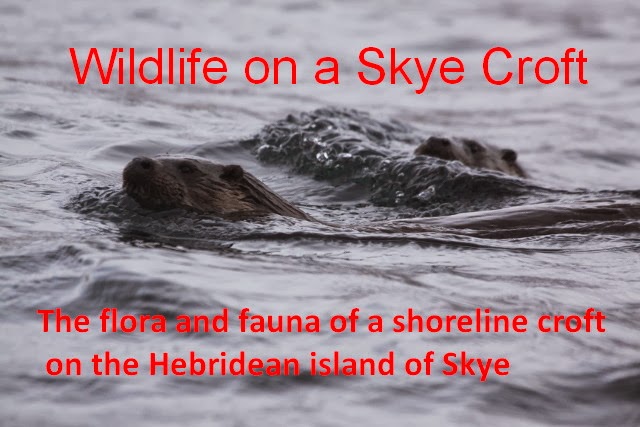 Our croft has turned blue. Something like a third to a half of the croft has bluebells on it and they are now at their best. Because every single plant is precious we have to tip-toe round them!
Our croft has turned blue. Something like a third to a half of the croft has bluebells on it and they are now at their best. Because every single plant is precious we have to tip-toe round them!
Normally regarded as a woodland species appearing in glades and rides, on Skye they appear in open fields provided there is some deepish soil, areas also favoured by bracken. Over the last 5 years we have cleared the bracken (and the brambles) by a combination of strimming, chemicals and hand removal. My fear was that the use of chemicals might also damage the bluebell population but I don't think it has.
To measure the impact, 3 years ago I staked out 2 plots each a square metre in area and have counted the number of flowering spikes in each plot each year since then. This table shows the results (flowering spikes per sq metre):
Plot 1 Plot 2
2011 106 107
2012 88 86
2013 165 94

In terms of croft maintenance we try to replicate hay meadow conditions which was how it was in the1960's (and a past resident remembers clouds of bluebells then). We use a powered scythe to cut the grass at the end of July down to about a couple of inches (later and shorter where there are orchids) after the bluebells and grasses have set seed. Up to 2011 we collected up the mowings into hay ricks, but last you we left the mowings where they were (turning them a little) to add a small amount of nutrient back, except for the area around Plot 2 where the cuttings were removed.
 Has this made a difference? Is the significant increase in Plot 1 a result of the new regime? Certainly too early to tell, but the seed germinates really easily, if it does not dry out.
Has this made a difference? Is the significant increase in Plot 1 a result of the new regime? Certainly too early to tell, but the seed germinates really easily, if it does not dry out. Also in flower at the moment is lousewort, marsh marigold, cuckoo flower, heath milkwort, marsh and dog violets and there are quite a number of common carder bees and white-tailed bumblebees, but only the former seem to pollinate bluebells.

In amongst the bluebells are 3 albino plants, a ratio I calculate of 200,000:1!

We have seen no otters recently. Gill and Steve at the other end of the village have had a few sightings, one of which last week they thought was a male. There are a few spraints around.
At the northernmost point of the croft lies a really interesting holt.. Under a rocky bluff is a holt entrance at the shore, and another entrance at the croft side of the bluff. There must be a cavernous passage from one to the other. I have had an infrared trail camera on this for a few days and got pictures of an otter using the holt on 3 days between the hours of 22.00 and 04.00, loosely 'nightime' , remembering that it stays light up almost to midnight at this time of year.

Just a quick note to say that at about 8.30am yesterday, 5th June, Steve saw two (possibly three, hard to be sure) otters swimming fast past us and heading for Dunan (south east from here).
ReplyDelete